We’ve all experienced the marvel of the flush toilet, but have you ever wondered about its intricate inner workings?
Let’s delve into the fascinating mechanism that makes this modern marvel possible. From the tank and water supply to the flapper and flush valve, every component plays a crucial role.
We’ll explore the fill valve and float mechanism, as well as the lever or button activation.
Finally, we’ll unravel the mysteries of the siphon and trapway mechanism.
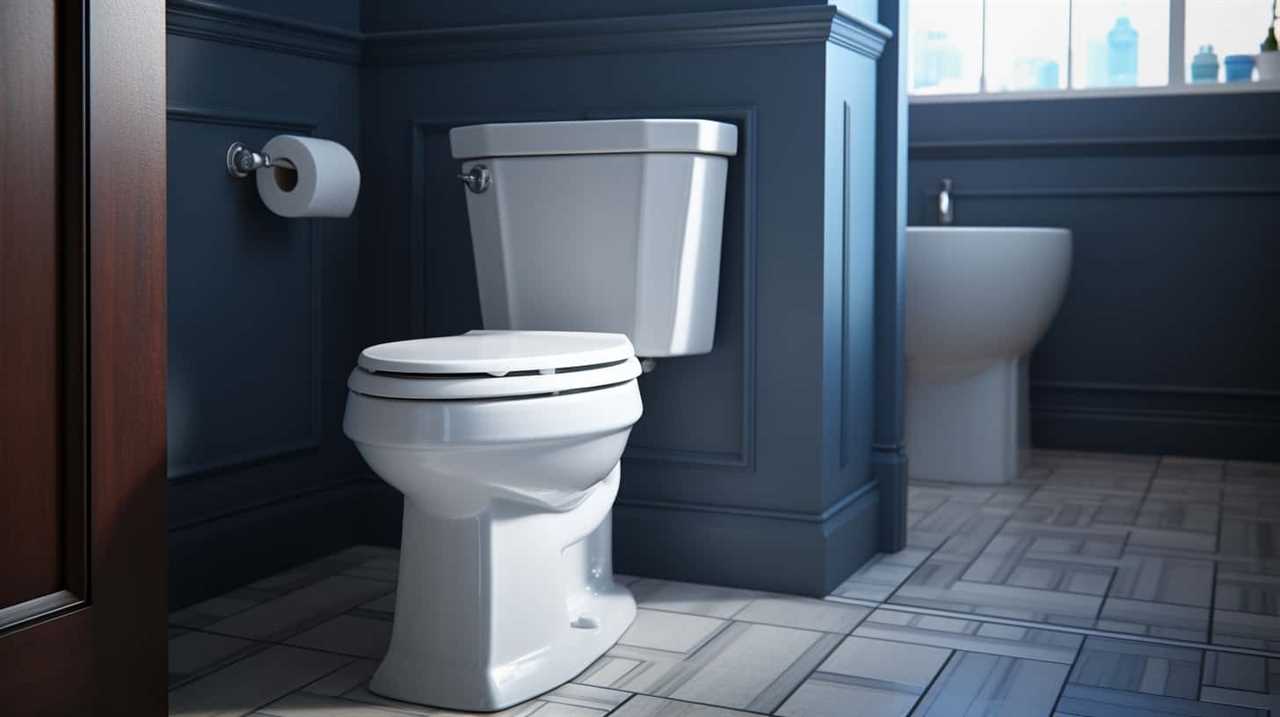
Get ready to master the art of the flush toilet!
Key Takeaways
- The tank holds water and houses the flushing mechanism, while the water supply ensures a constant flow of water and proper water pressure for effective flushing.
- The flapper covers the flush valve to prevent water flow, and the flush valve controls the release of water into the bowl. Regular maintenance and timely replacement of the flapper and flush valve are crucial.
- The fill valve refills the tank with water after flushing, and the float mechanism triggers the fill valve to shut off water flow when the water level reaches a certain point. Proper float adjustment prevents tank overflow and ensures optimal water level control.
- The lever or button is used to initiate the flushing process, with the lever pulling a chain to lift the flush valve or the button directly activating the flush valve. Different methods, such as a foot pedal, provide convenient ways to flush the toilet.
Tank and Water Supply
The tank and water supply play a crucial role in the mechanism of the flush toilet.
The tank, typically located behind or above the toilet bowl, holds a certain amount of water that’s released when the toilet is flushed. This water is responsible for creating the necessary force to remove waste from the bowl and carry it down the drain.
Additionally, the tank also houses the flushing mechanism, which consists of a handle or button that, when pressed, activates a valve to release the water.
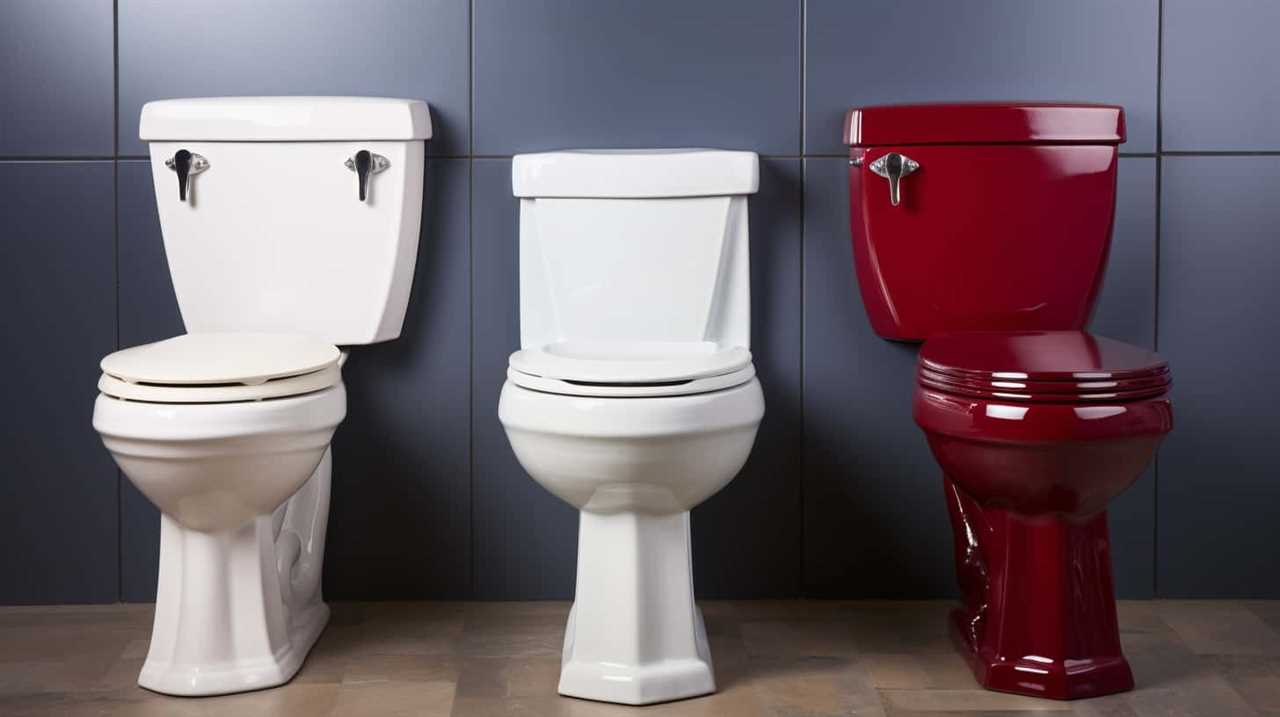
The water supply, connected to the tank, ensures a constant flow of water for flushing and toilet bowl cleaning. It’s important to adjust the water pressure to ensure proper flushing and prevent clogs or inadequate cleaning.
Flapper and Flush Valve
To understand the mechanism of the flush toilet, let’s now delve into the role of the flapper and flush valve.
The flapper is a rubber or plastic piece that covers the flush valve, preventing water from flowing into the toilet bowl. When the toilet is flushed, the flapper lifts, allowing water to rush into the bowl and create the necessary force to remove waste. It’s essential to regularly maintain the flapper to ensure proper functioning. Inspect it for any signs of wear or damage and replace it if necessary.
The flush valve, on the other hand, is the mechanism that controls the release of water into the toilet bowl. If you experience problems with flushing, it may be necessary to replace the flush valve.
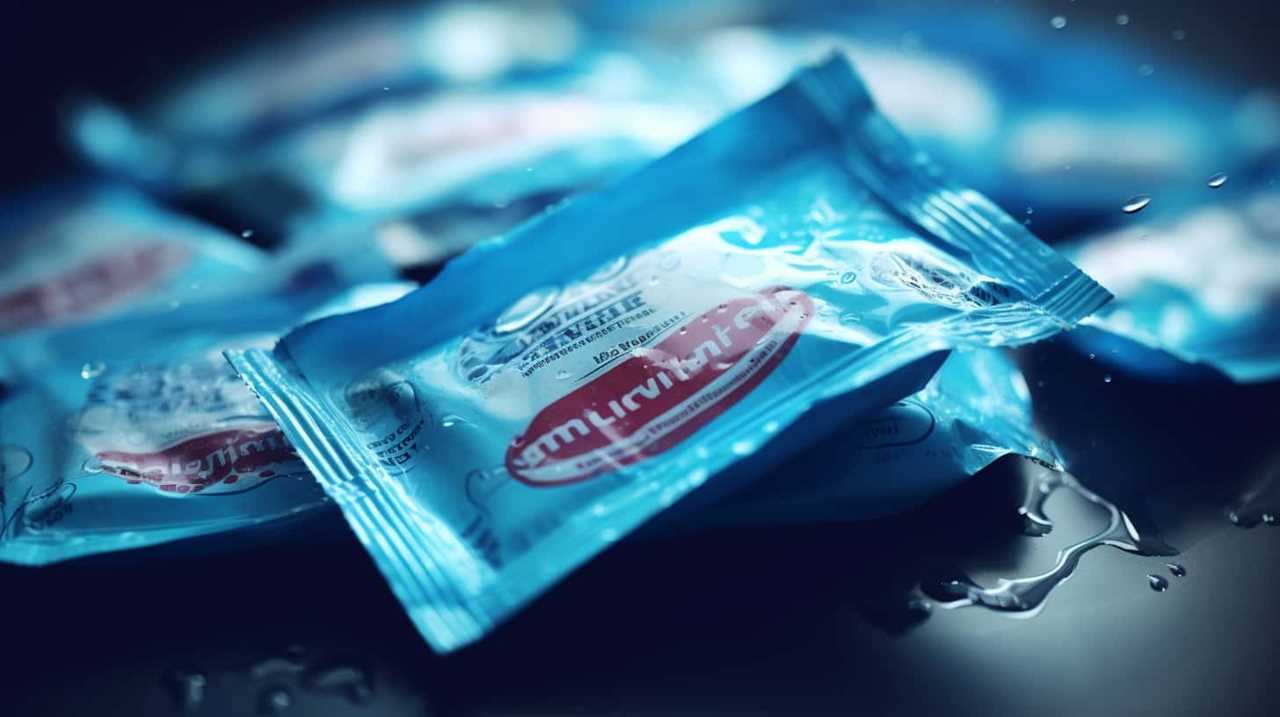
Regular maintenance and timely replacement of both the flapper and flush valve are crucial to maintain the efficiency and functionality of your flush toilet.
Fill Valve and Float Mechanism
The fill valve and float mechanism play a crucial role in maintaining the correct water level inside the toilet tank. When the toilet is flushed, the flapper opens, allowing water to flow from the tank into the bowl. Once the flush is complete, the fill valve is responsible for refilling the tank with water.
The float, attached to the fill valve, rises as the water level inside the tank increases. When the float reaches a certain height, it triggers the fill valve to shut off the water flow. This float adjustment ensures that the tank doesn’t overflow and maintains the desired water level for the next flush. Proper water level control is essential for optimal flushing performance.
Now, let’s move on to the next section about lever or button activation.
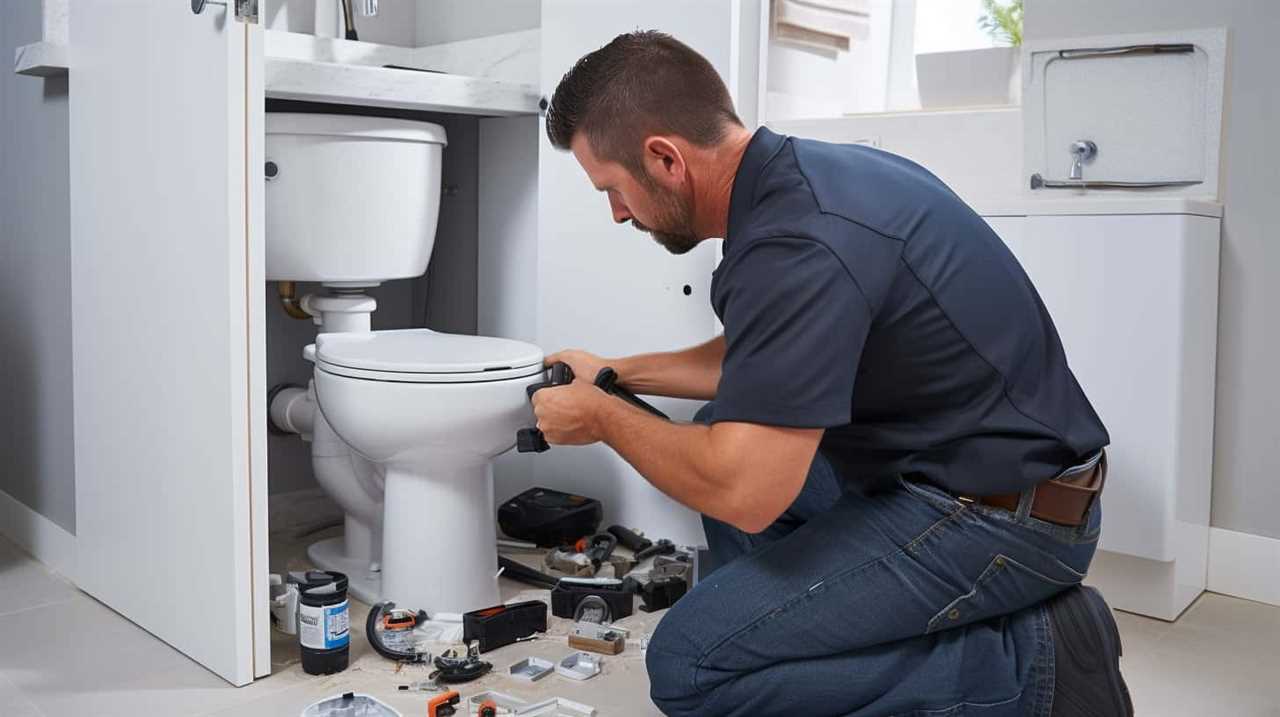
Lever or Button Activation
For activating the flush in a toilet, we typically use either a lever or a button. These mechanisms are designed to initiate the flushing process by activating the flush valve and allowing water to enter the bowl. Here are three common methods of lever or button activation:
- Lever: The lever is usually located on the side of the toilet tank and is connected to a chain. When the lever is pressed or lifted, it pulls the chain, which in turn lifts the flush valve, releasing water into the bowl.
- Button: Some toilets have a button located on top of the tank. When pressed, the button directly activates the flush valve, allowing water to flow into the bowl.
- Foot Pedal: In certain commercial or public restroom settings, a foot pedal may be used to activate the flush. Pressing the foot pedal causes a mechanism to lift the flush valve, initiating the flushing process.
These different methods of lever or button activation provide users with a convenient and efficient way to flush the toilet.
Siphon and Trapway Mechanism
The siphon and trapway mechanism is responsible for the efficient removal of waste and the prevention of backflow in a flush toilet. It ensures that the waste is effectively transported through the drainage system, maintaining cleanliness and hygiene. The siphon action is a key component of this mechanism, creating a vacuum effect that pulls the waste from the bowl into the trapway. The trapway, a curved channel located at the base of the toilet, acts as a barrier preventing the waste from flowing back into the bowl.
To provide a deeper understanding of this mechanism, let’s take a look at the following table:
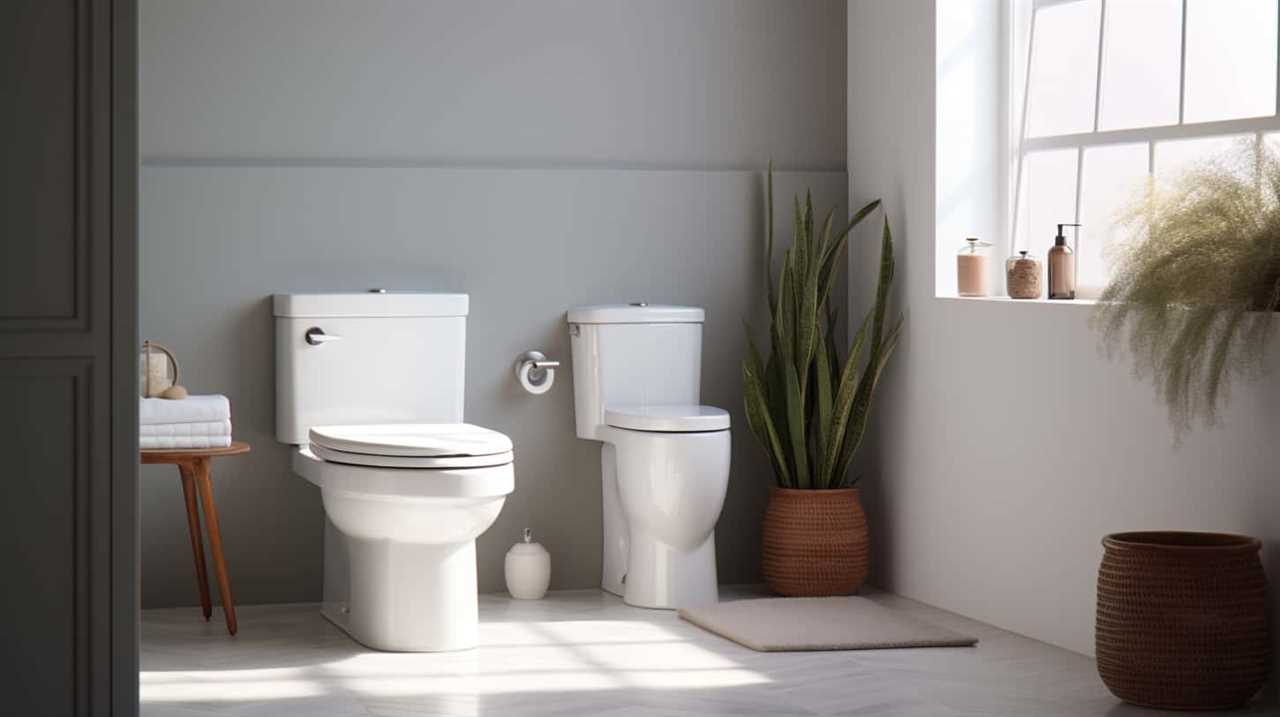
| Component | Function | Importance |
|---|---|---|
| Siphon action | Creates a vacuum effect, pulling waste from the bowl | Essential for efficient waste removal |
| Trapway | Curved channel preventing backflow of waste | Maintains cleanliness and hygiene |
| Drainage system | Transports waste from the toilet to the sewer or septic tank | Ensures proper disposal of waste |
Understanding the siphon and trapway mechanism is crucial for maintaining the functionality and cleanliness of a flush toilet. By incorporating these components into the design, waste is efficiently removed, and the risk of backflow is minimized.
Frequently Asked Questions
How Does the Flush Toilet Contribute to Water Conservation?
The flush toilet contributes to water conservation through water-saving technology, such as dual flush toilets. These toilets offer different flushing options for liquid and solid waste, reducing water usage and promoting sustainability.
Are There Any Potential Health Risks Associated With Using a Flush Toilet?
There may be potential hazards associated with using a flush toilet, such as sanitation concerns. It is important to consider proper maintenance and cleaning to ensure a hygienic environment for all users.
Can a Flush Toilet Be Easily Installed in Older Homes?
Installing a flush toilet in older homes can pose retrofitting challenges due to outdated plumbing requirements. However, with proper planning and professional assistance, it is possible to overcome these obstacles and successfully install a flush toilet in an older home.
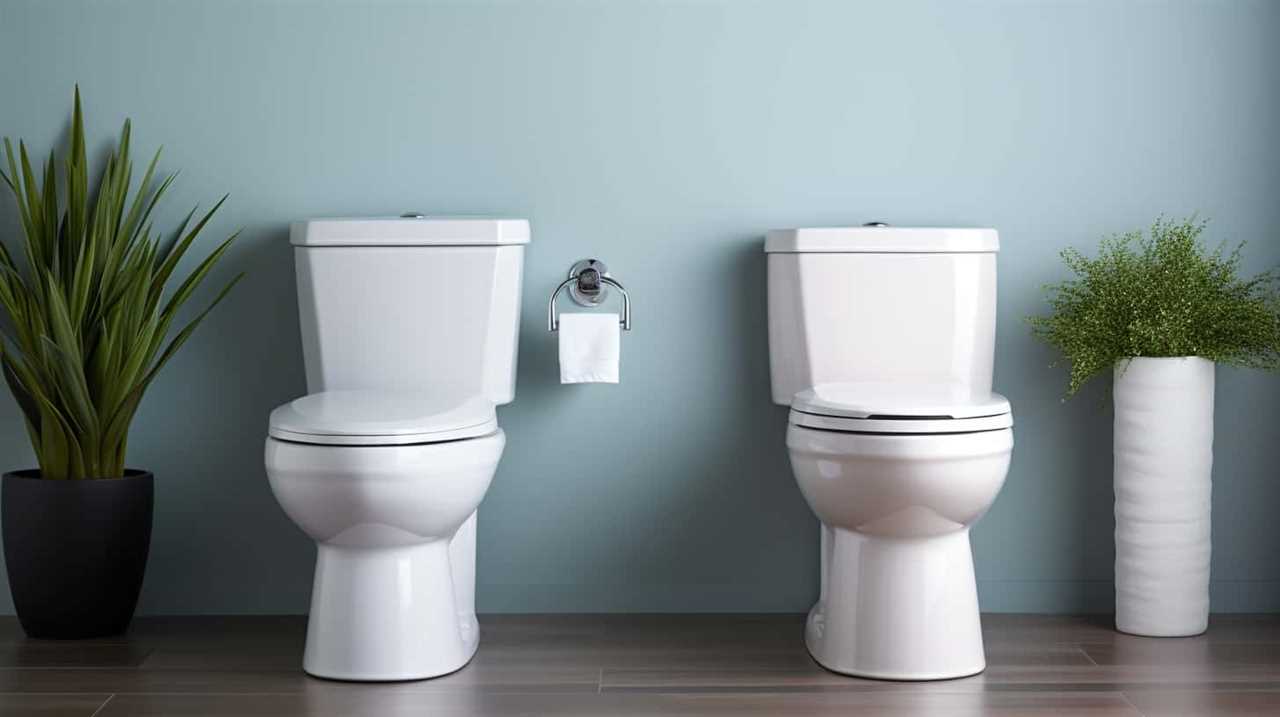
What Are the Common Issues That Can Arise With a Flush Toilet and How Can They Be Fixed?
Common issues with flush toilets include clogs, leaks, and running water. To fix a clog, we can use a plunger or a drain snake. Leaks can be resolved by replacing faulty seals or valves. Running water can be fixed by adjusting the float or replacing the flapper.
Is It Possible to Retrofit a Traditional Flush Toilet to Be More Environmentally Friendly?
Yes, it is possible to retrofit a traditional flush toilet to be more environmentally friendly. There are various retrofitting options available, such as installing water-saving technologies that reduce water consumption during each flush.
Conclusion
In conclusion, the flush toilet operates through a complex mechanism that includes:
- The tank and water supply
- The flapper and flush valve
- The fill valve and float mechanism
- The lever or button activation
- The siphon and trapway mechanism
This intricate system ensures efficient and effective flushing of waste.

For example, in a case study conducted on a residential building, the implementation of dual-flush toilets resulted in:
- A significant reduction in water consumption
- Environmental sustainability
- Cost savings.










